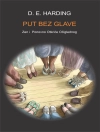Now, for the first time, a philosopher undertakes a systematic
investigation of the moral and aesthetic issues to which cultural
appropriation gives rise.
* Cultural appropriation is a pervasive feature of the
contemporary world (the Parthenon Marbles remain in London; white
musicians from Bix Beiderbeck to Eric Clapton have appropriated
musical styles from African-American culture)
* Young offers the first systematic philosophical investigation
of the moral and aesthetic issues to which cultural appropriation
gives rise
* Tackles head on the thorny issues arising from the clash and
integration of cultures and their artifacts
* Questions considered include: ‘Can cultural appropriation
result in the production of aesthetically successful works of
art?’ and ‘Is cultural appropriation in the arts
morally objectionable?’
* Part of the highly regarded New Directions in Aesthetics
series
قائمة المحتويات
Preface.
Chapter One: What is Cultural Appropriation?:.
Art, Culture, and Appropriation.
Types of Cultural Appropriation.
What is a Culture?.
Objections to Cultural Appropriation.
In Praise of Cultural Appropriation.
Chapter Two: The Aesthetics of Cultural
Appropriation:.
The Aesthetic Handicap Thesis.
The Cultural Experience Argument.
Aesthetic Properties and Cultural Context.
Authenticity and Appropriation.
Authentic Appropriation.
Cultural Experience and Subject Appropriation.
Appropriation and the Authentic Expression of a Culture.
Chapter Three: Cultural Appropriation as Theft:.
Harm by Theft.
Possible Owners of Artworks.
Cultures and Inheritance.
Lost and Abandoned Property.
Cultural Property and Traditional Law.
Collective Knowledge and Collective Property.
Ownership of Land and Ownership of Art.
Property and Value to a Culture.
Cultures and Intellectual Property.
Some Conclusions about Ownership and Appropriation.
The Rescue Argument.
Chapter Four: Cultural Appropriation as Assault:.
Other Forms of Harm.
Cultural Appropriation and Harmful Misrepresentation.
Harm and Accurate Representation.
Cultural Appropriation and Economic Opportunity.
Cultural Appropriation and Assimilation.
Art, Insignia, and Cultural Identity.
Cultural Appropriation and Privacy.
Chapter Five: Profound Offence and Cultural
Appropriation:.
Harm, Offence, and Profound Offence.
Examples of Offensive Cultural Appropriation.
The Problem and the Key to its Solution.
Social Value and Offensive Art.
Freedom of Expression.
The Sacred and the Offensive.
Time and Place Restrictions.
Toleration of Offensive Art.
Reasonable and Unreasonable Offence.
Conclusion: Responding to Cultural Appropriation.
Summing Up.
Supporting Minority Artists.
Envoy.
Bibliography of Works Cited and Consulted.
Index
عن المؤلف
James O. Young is Professor and Head of the Department of Philosophy, University of Victoria. He has published extensively on philosophy of language and philosophy of art. His previous books include Global Anti-realism (1995) and Art and Knowledge (2001), and he is editor (with Conrad Brunk) of The Ethics of Cultural Appropriation (Blackwell, 2008).












